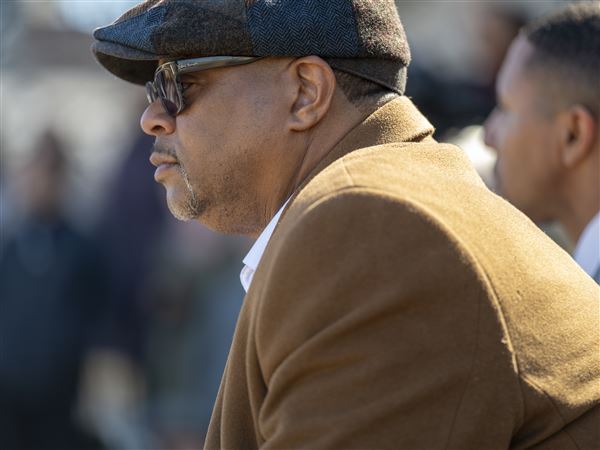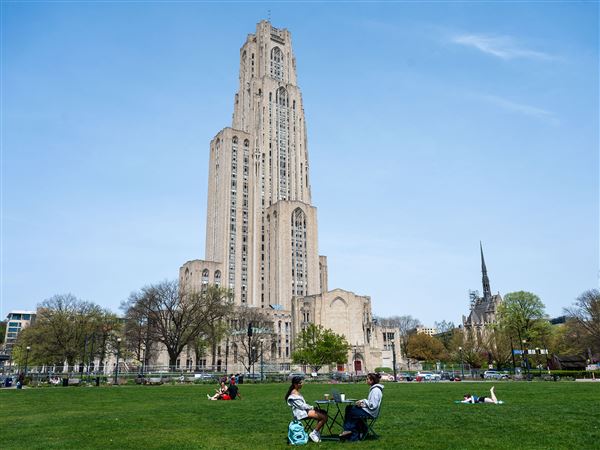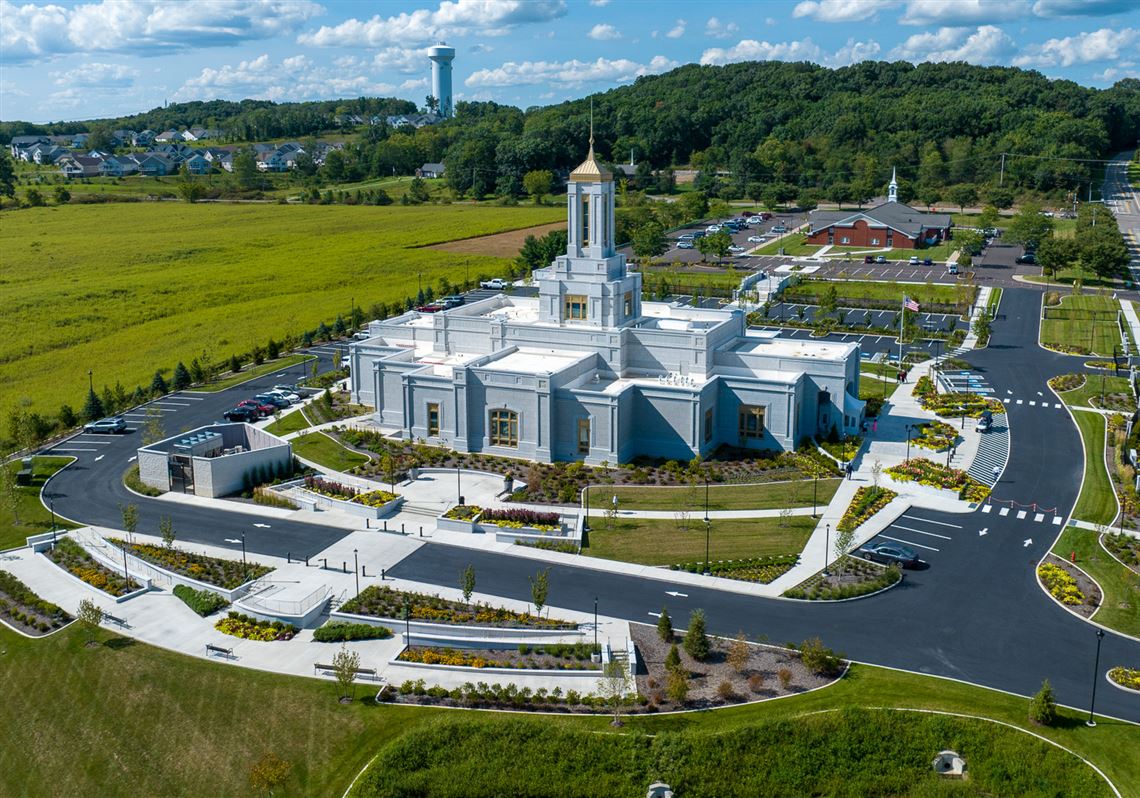In Cranberry, a striking new landmark has emerged — a temple with gleaming white granite walls and a golden spire rising 125 feet toward the heavens.
It is the Pittsburgh Pennsylvania Temple, the holiest house of worship for members of the Church of Jesus Christ of Latter-day Saints, also known as Mormons. Unlike Mormon churches, which are open to all, only the most faithful members can enter temples.
But there’s an exception for new temples.
For more than two weeks — from Aug. 16 to until Aug. 31 — the temple doors will swing open for the general public to take a look inside from 9 a.m. to 8 p.m. Monday through Saturday.
Following a three-year construction process, the congregation will dedicate the temple at 2093 Powell Road on Sept. 15 before using it for sacred activities.
“When a temple is first built, it is briefly open for public tours,” said Irene Caso, a church spokeswoman. “Once dedicated, attendance is reserved for faithful members of the church who are ready to participate in additional gospel ordinances.”
Mormons believe their dead relatives can be baptized and receive salvation. The temple is where they perform ceremonies to baptize dead relatives, as well as sealing married couples into eternal matrimony — a ceremony that can take place during a wedding or after a couple is married.
Baptisms for the living are held in their churches — also known as chapels — along with other regular church activities including sacrament, meetings and social activities.
This is the 196th operating temple in the Mormon church. They all vary greatly in size, depending on the membership in a geographic area.
The flagship Salt Lake Temple in Utah measures 253,015 square feet. For comparison, the Pittsburgh temple comes in at 32,240 square feet. The Mormons have about 29,000 members in the Pittsburgh region, spread across 80 congregations.
Members here previously traveled hours to attend the nearest Mormon temple — either in Philadelphia, Washington, D.C., or Cleveland. The Pittsburgh Pennsylvania Temple is the second Mormon temple in Pennsylvania, and a third one is on the way.
Church President Russell M. Nelson announced in April plans to construct a temple in Harrisburg.
Mormons believe that Mr. Nelson is a modern-day prophet of Jesus Christ. The religion of some 17 million members worldwide was founded in New York in 1830 by Joseph Smith, whom the Mormons regard as a prophet comparable to Moses and Elijah.
Chris Hoke, president of the Pittsburgh North Congregations of the Mormon Church and a two-time Super Bowl champion for the Steelers who works as a sports commentator for KDKA-TV and radio, compared the temple’s launch to the opening of Heinz Field in 2001.
“I remember talking to the fans and they just could not wait to get in there and wave their Terrible Towels and cheer for their beloved Pittsburgh Steelers,” Mr. Hoke said of the Heinz Field inaugural game. “That’s the excitement that we as members of the Church of Jesus Christ of Latter-day Saints feel today as we are preparing to enter this temple.”
The interior of the Pittsburgh temple is designed to inspire awe and spiritual reflection.
The interior doors and stained-glass windows are framed with dark brown wood, creating a rich contrast against the cream-colored theme of its ceilings, walls and marble floors.
High ceilings and spectacular crystal chandeliers in the temple’s holiest spot — the Celestial Room — inspire worshipers to look upward while they are bathed in a soft ethereal glow that fills the space.
James Rasband, a General Authority Seventy — a church leader who oversees temples from the Salt Lake City headquarters — said Mormon temples are constructed to the highest standards, “because we believe we are building the house of the Lord and we want to make it beautiful.
“We hope this temple will stand as a beacon of light and hope for all who pass by and for all who are familiar with it here in Western Pennsylvania.”
Each temple is built to reflect the culture of its surrounding landscape.
In the Pittsburgh temple, the design motifs include Pennsylvania’s state flower (the mountain laurel) and the pink and white blossoms of the dogwood tree, which are common in this region. Mountain laurel patterns are imprinted on the carpet and dogwood designs are incorporated on the ceilings.
Several local contractors were involved in the temple construction. They include Thomarios, which did the organic leaf pattern on the wall covering in the Celestial Room, and Ferry Electric, which installed crystal chandeliers in the Sealing Room and Celestial Room.
Easley & Rivers in Monroeville did the framing and drywall for the temple’s ceilings, which feature gypsum board and acoustic ceiling tiles.
“This project has been a wonderful opportunity for our management team to live and work in this area,” Ms. Caso said.
“The people of Cranberry Township have been gracious and patient as we have worked in the community, and we are grateful for their hospitality and partnership,” she said.
Tim Grant: tgrant@post-gazette.com or 412-779-5834
First Published: August 13, 2024, 9:30 a.m.
Updated: August 13, 2024, 7:23 p.m.


















